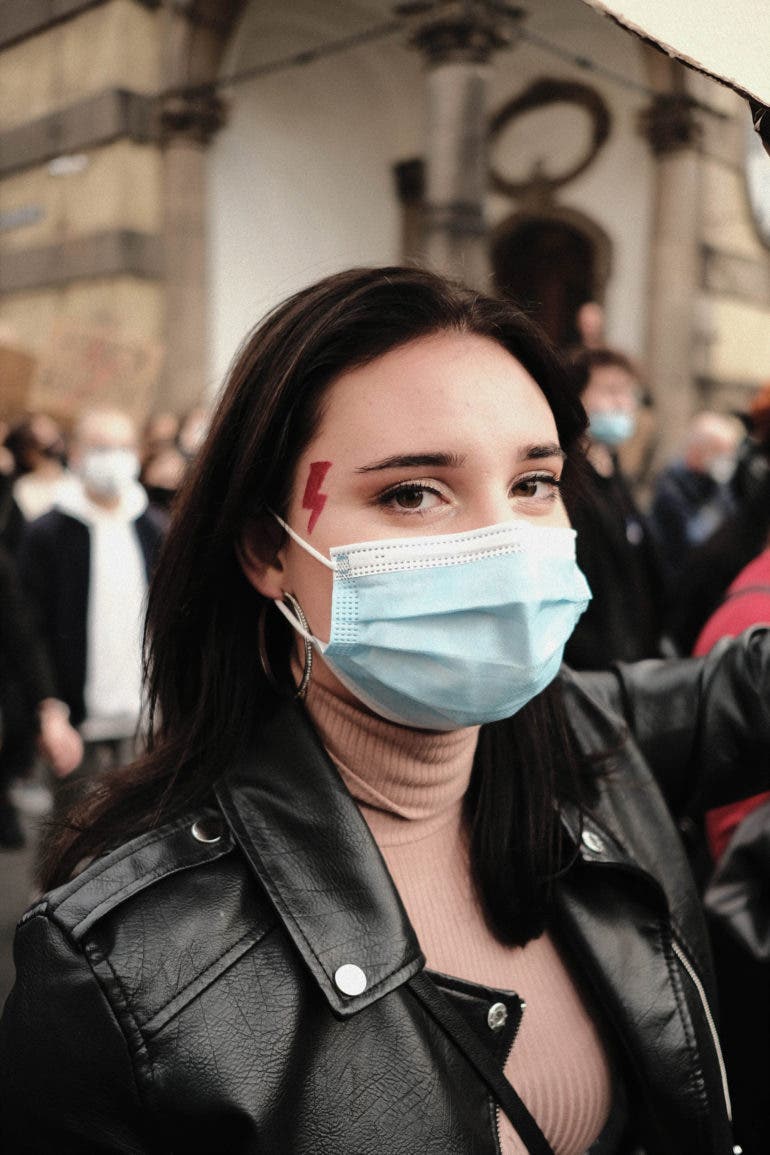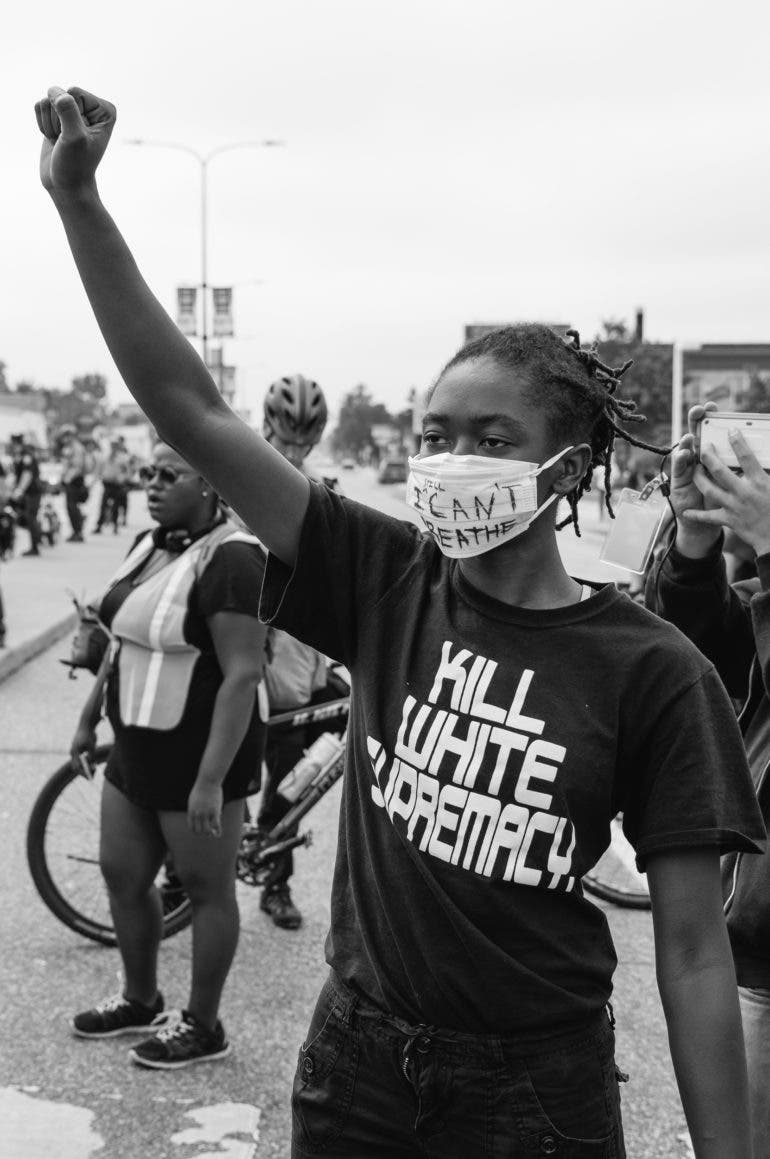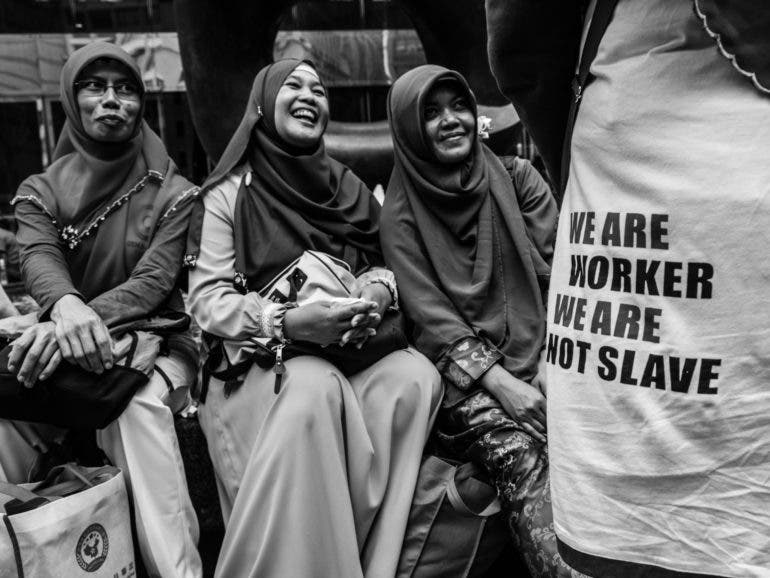A Look at 5 Photographers Documenting Civil Rights Struggles
These photographers are doing the work we need to truly pay attention to.
In our 11 years, we’ve interviewed lots of photographers. But more importantly, we’ve stayed close to our photojournalism roots. Our platform has been used by many photographers to get the word out. Much of what documentary photography about these days is Civil Rights. It’s happening all across the world in various ways. There are stories at the top of the news every morning about it. But there are some that haven’t really been told as much. For Martin Luther King Jr.’s birthday, we’re counting down a few that we’ve featured.
Kacper Zapałowski Shows the Faces of Women’s Civil Rights in Poland

Photographer Kacper Zapalowski is based in Poland. While the American media focused heavily on our own protests, a massive one was happening in Poland. As always, the reproductive rights of women were being challenged. Reproductive rights have been a civil rights issue for women for many years. Thousands of people marched on the issue. Kacper documented many of these people in his images. All of them have a unique symbol that they used to show support. And they were all wearing masks too since there is a global pandemic going on. Kacper’s photos show us again, that these are ordinary folks fighting for their rights. The people are singled out among loads of other protestors. And when we get to look at these people as individuals, we can study them a bit more.
In our interview, he states:
“Currently, they are one of the biggest protests in Poland to date. Over 100 000 people went to the capital city of Warsaw just yesterday, with many more in the rest of Poland. We had over 500 protests combined with over 600 000 people. Thus far, the people I encountered were great, desperately wanting change and still positive in their hearts. The cars honking in traffic stretching a few miles to show their support and the bikes protests with hundreds of unique bike bells sounds.”
Adam Wold Tells the Story of the Black Lives Matter Movement

Photographer Adam Wold took to spreading the word of the Black Lives Matter movement, along with many other photographers. Adam’s photos do a number of things. First off, they convey the people in them to be ordinary folks just like the rest of us. They’re fighting for the same civil rights and equality that white folks have. Best of all though, Adam uses an incredibly powerful narrative telling tool: text. Throughout the photos, the banner of Black Lives Matter is ever-present. But so too are some very important words. “I can’t breathe,” was said by George Floyd when a knee was on his neck for a long time. Amidst all these, the US is experiencing the Coronavirus Pandemic.
The body of work, like all documentary photography, needs to be carefully taken in.
In our interview, he stated:
“My goal was to humanize the demonstrators by communicating the very real emotions that had brought them out on the streets. I would often hear opponents of BLM complain about the roads being blocked, how their commute was ruined or that an ambulance might be trying to get through. My hope was that through seeing these individuals up close they might be able to imagine the circumstances that brought them to this place and perhaps feel a bit of empathy.”
Xyza Cruz Bacani Turns Her Lens to Migrant Workers

September 03, 2017
Xyza Cruz Bacani does some spectacular work documenting migrant workers. She hails from the Philipines and wanted to find ways to tell these stories. For her book, We are Like Air, she partially pointed the lens at her own family. She said that this allowed her to be vulnerable. Lots of folks forget that migrant workers are human beings, and deserve civil rights too. They deserve the same rights and respect to humanity that you’d give to anyone else. Her photos show some very intimate moments between family members. Looking back at her images, I immediately think about how refugee families were torn apart from one another at our borders.
In our interview, she said:
“All the stories that I have done are memorable for me. I’m still in touch with most of the people I photograph…”
JD Barnes Shed Light on the Portland Protests

Photographer JD Barnes worked to document the Civil Rights protests happening in Portland for a solid part of 2020. The photo above is part of his body of work showing the world what happened. Indeed, this image is an incredibly telling one. JD used the light in the scene to really convey what was happening. The photo will send chills to anyone and make them stare for a while. Just imagine being shot at like this. How would you feel? When I was putting this roundup together, this photo came back into my head as I thought about what recently happened at the Capitol building as well. The difference in what happened is stark. If it weren’t for JD’s work, we wouldn’t have this very disturbing photo to ponder over.
In our interview, he told us:
“That one left a scar I see daily. That entire moment is indelibly seared into my consciousness. Not only because of the scary feeling of not knowing at that moment if I was going to be permanently injured or killed, but the randomness of it all. I was in a big crowd. I wasn’t being antagonistic, anybody could have been hit. But here I am, a photojournalist, shot in the chest by federal ordinance. It was wild.”
Josué Rivas Tells the Civil Rights Stories of Indigenous People

Photographer Josué Rivas has worked to tell an often-forgotten civil rights story. The voices of the indigenous people who lived here before colonization are often silenced. Images like the one you see above are part of his project called Standing Strong. The entire project strives to show us a side of the world that American Media has barely touched on. But indigenous people were fighting for the basic right to just have clean water. For most folks, they’d simply just glance over the images. But when you start to move your eyes around them very carefully, little details emerge. You start to see more about who these people are. Further, you begin to see how they’re trying to hold onto their ancestral identity while trying to modernize. This already marginalized group of people are portraited by Josué to have lots of mistreatment.
In our interview, he said:
“In my experience, the biggest challenge we face as Indigenous peoples is the lack of visibility in society and dealing with the effects of intergenerational trauma. The public art portion of the project aims to remedy the visibility aspect, it’s definitely a reclamation and invasion of space. My hope is that when people put up their image and see themselves and get to be honored by their community, at that moment I think healing can happen. We shall see.”
All images in this article are used with permission from the photographers.